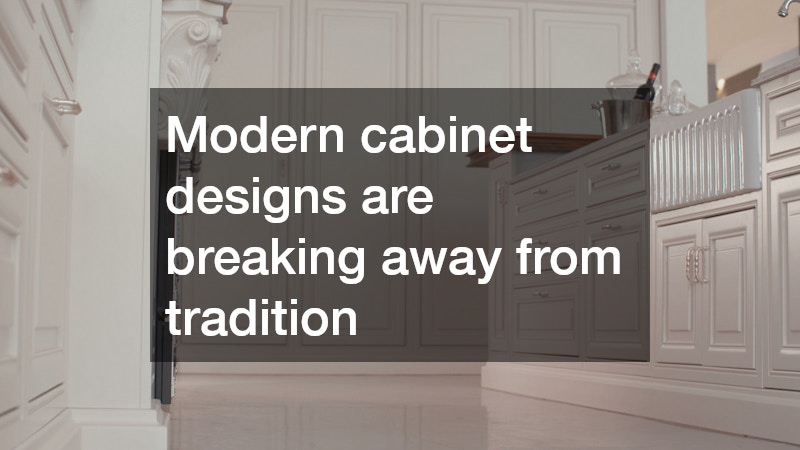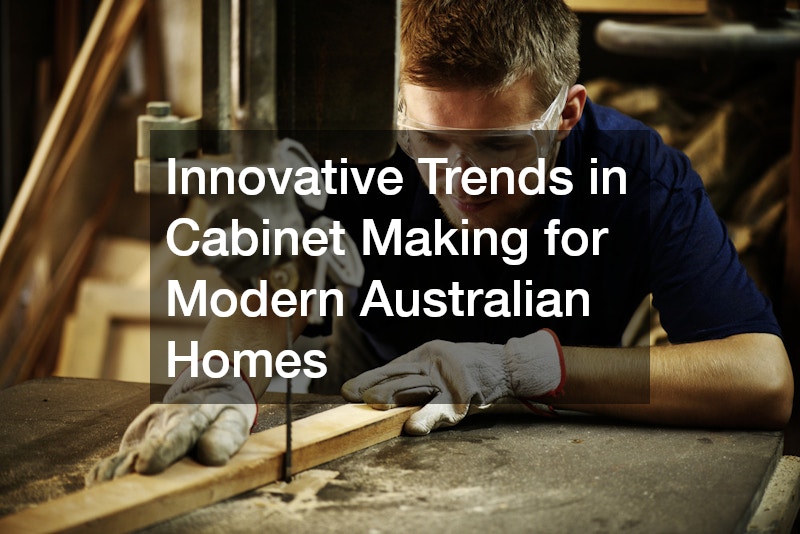In contemporary Australian homes, thoughtful design is no longer confined to open-plan living areas or outdoor entertainment spaces. Increasingly, homeowners are recognising the importance of cabinetry as a defining element of their interiors. From kitchens to bathrooms and everything in between, joinery is evolving to reflect a more personalised, functional approach to everyday living. These innovations are driven not just by changing aesthetics but also by practical needs around storage, organisation and adaptability.
Modern cabinet designs are breaking away from tradition, incorporating new textures, concealed hardware and space-saving techniques that deliver both beauty and utility. With the help of advanced manufacturing technology and a growing demand for customisation, Australian designers and craftsmen are pushing the boundaries of what cabinetry can achieve in the home.
Integration & Flow Across Living Spaces
One of the most noticeable trends is the seamless integration of cabinetry across different zones of the house. Rather than isolating built-in units to kitchens or laundries, many homes are incorporating cabinetry that creates visual and functional continuity from one room to the next. Timber veneers, matte finishes and recessed handles offer a consistent look while eliminating the visual clutter of traditional cupboards and drawers.
This holistic approach allows for a sense of cohesion throughout the home, with custom joinery often tailored to match architectural features such as bulkheads or internal panelling. Whether it’s built-in storage in a hallway, media unit in a lounge or wardrobe in a bedroom, today’s cabinetry is about blending form with function in a way that enhances the overall design narrative of a property.
Sustainability & Material Innovation
Australian homeowners are becoming more conscious of the environmental impact of their building choices, and this is reflected in the materials being used for cabinetry. Locally sourced timbers, formaldehyde-free boards and recycled materials are gaining traction as viable alternatives to conventional products. Designers and builders are not only looking at aesthetics but also longevity, recyclability and the carbon footprint of production.
Material selection now plays a key role in both the appearance and performance of cabinetry. Composite materials, high-pressure laminates and eco-friendly substrates are helping to extend the lifespan of fittings while reducing waste. As sustainability becomes a greater priority, cabinet solutions are also being designed for disassembly and reuse, giving them a longer life cycle than ever before.
Smart Storage Solutions & Customisation
The push for personalisation is giving rise to storage features tailored to specific lifestyles. Instead of off-the-shelf options, homeowners are seeking layouts that accommodate the way they live. This may include charging stations, pull-out pantries, appliance garages or even hidden compartments that keep surfaces clear while maximising usability.
Particularly in smaller homes or multi-purpose spaces, storage needs to be smart and unobtrusive. Deep drawers in kitchens, vertical dividers in wardrobes and corner access mechanisms are just some of the solutions helping Australians make the most of their space. By thinking beyond conventional cupboards, today’s designs elevate storage from a necessity to an experience.
Technology & Craftsmanship Working Together
Advanced digital tools like CAD design, CNC cutting and 3D rendering are transforming how cabinetry is designed and built. These technologies allow for greater precision and faster production without compromising on craftsmanship. While machines now handle much of the cutting and shaping, the final installation and detailing still rely on skilled tradespeople who ensure the perfect fit and finish.
This marriage of technology and human expertise is at the core of modern cabinet making. Clients can visualise their spaces before fabrication begins, making it easier to adjust layouts or materials early in the process. This not only saves time but also ensures that the final result meets the brief in terms of style, function and budget.
The Role of Cabinetry in Home Identity
Cabinetry is no longer viewed as merely functional infrastructure—it is an integral part of a home’s personality. Whether opting for bold colours, soft-touch surfaces or minimalist profiles, homeowners are using cabinetry to make strong design statements. These decisions contribute to the feeling of comfort and individuality, allowing each space to serve its purpose while reflecting the people who live there.
By customising design elements like lighting integration, open shelving or contrasting textures, cabinetry is increasingly seen as an expression of lifestyle. The details matter, and modern cabinet making allows for those details to be thoughtfully tailored without sacrificing quality or cohesion.
As interior expectations continue to evolve, cabinetry is stepping into the spotlight as both a functional asset and a key design feature. With a focus on integration, sustainability and technological precision, Australian homes are embracing new approaches that redefine what cabinetry can offer.
The evolution of cabinet making is about more than just storing items—it’s about creating built-in solutions that respond to how people live, work and interact within their spaces. By blending fine craftsmanship with modern innovation, today’s trends ensure that cabinetry remains relevant, refined and ready for the future.

